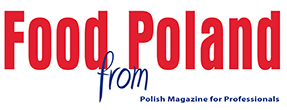Today, private labels are offered by all trade formats. Of course, discount stores (let us disregard the issues of definition) are the kings of the field, reserving between 40% and 70% of their SKUs (and a little less in terms of value) to private labels. Only slightly behind them are smaller stores of large-format chains, stocked close to a level of 50%. This also includes hypermarkets and supermarkets, discounting their sales by introducing whole generations of private labels, more numerous in absolute numbers than those in so-called discounts. A simple example: let us say that a so-called discount has 1,600 SKUs in private label (integrated under an umbrella formula or not) and let it make up around 70% of the product range, but an ambitious hypermarket or supermarket may offer 3,000 – 5,000 SKUs of such goods, and it would not comprise even 20%. Private labels have also gone “to the masses”, i.e. to small retail spaces and several other strongholds of traditional trade, such as cooperative systems. Even though, in the case of the latter, we speak of several-percent shares in the offer, 20% is no rarity in modern small store systems, i.e. in standard convenience stores. In this regard, store space is not important in deciding “whether” – the decision effort has a qualitative nature, it is all about an efficient formula of “how” – to implement private label programmes.
A particular role in the market of such products is played by franchises (of different “hardness”) and similar chains. Independent stores in the strict sense are essentially on the wane, while franchise itself comprises approx. 80,000 stores, of which 2/3 are food and mixed stores. Franchise integrators are usually chain wholesalers, creating chain systems associating thousands of small, medium-sized, or even large (above 200 m2) stores. Therefore, wholesale is the basic entry factor of the small and medium space into large-scale business models, and its most effective competitive instrument is comprised by private level product lines, finding retail sale systems numbering thousands of outlets in integrated stores and, increasingly, in HoReCa. Integrated stores today (franchises, purchasing groups, partnership groups) may be estimated to comprise at least 30% of food market sales, the same percentage as held by four discount chains. It is also worth keeping in mind that there are approx. 1,400 of these systems, including approx. 1,000 franchise ones alone.
Today, everyone discounts sales; they fight by price and increase the efficiency of achievement of high quality parameters (thanks to uniform chain control and quality discipline) for a good price. Without private labels, this is much more difficult, costly, and on a market as dense and competitive as the Polish one, virtually impossible – both in terms of finance and management. Therefore, the commonness of PL-class products, mainly in foods, is not surprising. They comprise 20% in terms of value (recent data speak of 19.6%) and approx. 35% (according to PLMA) in terms of quantity, by SKU (stock keeping units). Estimating the entire food market at approx. 250,000 SKUs, while simultaneously omitting the collective (umbrella) brands, we arrive at a tremendous number with significant dynamics. For instance, it's suffice to say that the value of the PL class of FMCG in 2015 was approx. PLN 40 billion, while recently, in 2018, it exceeded PLN 50 billion, so we speak of average annual dynamics amounting to approx. 6%. Of course, the “kings of the field” are household chemical items, non-perishable foods, fresh foods, personal care items. We have approx. 260,000 stores in Poland – probably the highest number in Europe (it had been about 350,000 ten years ago), with a very complex structure, vastly dominated by stores that are small but saturated with private labels – so these brands are everywhere, increasing the attractiveness of the producers’ work on PL-class product lines. This trend is supported by a consumer trend of key importance to Poland, indicating the proximity and quickness of purchase, or preference for the broadly understood convenience strategy, efficiently developed by discount stores, proximity markets and convenience stores (this comfort zone is likely to comprise approx. 50% of the market – 30% for discounts, about 6-7% each for small convenience stores and so-called proximity markets, which makes approx. 12-14%). It is worth noticing that the convenience strategy exceeds the rigid limits of trade formats, providing a wide area of success for private labels – we tend to buy cheap, well and comfortably. This is where the specific structure of a segment served by the PL class comes into being: approx. 60% is standard PL, up to 20% is premium PL, and the rest – quickly shrinking for many years – is economy-class PL. This brings sale stabilization to stores and producers who compete through quality, struggling for price.
An important area of private label expansion in Poland is exports – however paradoxically that might sound. This is largely determined by transnational large-area chains exporting goods to their national branches throughout and outside Europe (we mean at least 25 countries here). Here, one can speak of approx. PLN 10 billion, of which about 2/3 is comprised by private labels, usually ordered into product groups of umbrella brands. Another export segment is specialist and “ethnic” wholesale addressed to the neighbouring countries and centres of Polish emigration. The best example is exports to the UK, Germany, the Czech Republic, Ukraine, Slovakia, Hungary, Italy, the Balkans, Portugal or Spain. To a significant extent, if difficult to estimate, such products function “under” private labels of foreign wholesale exporters and recipients. I believe the amount involved reaches at least PLN 1.5 billion.
Last, but by no means least: the issue of consumer reception of PL-class products. A well-known 2014 report by On Board PR states that 97% of respondents declare contact with such products. Other surveys and journalist research confirm this figure for the last 5 years. What is most important for these products? I believe the essence is that they are perceived as inexpensive (approx. 2/3 of the survey) and diverse in terms of quality and price level, not unlike brand products. The conclusion is this is just a commodity like any other. Besides, above 70% of purchasers have no reservations, perceiving private labels positively. Moreover, pointing out the price, they also associate the purchasing decision with being “smart”. Therefore, these products have found their place on the market under normal competitive principles, competing not just against their branded counterparts but against each other, and trade companies proved to be competitors, not just in trade but in production, introducing another peculiar form of consolidating their offers and trade potentials to the market. What would be next? What lies ahead is an interesting – and already ongoing – race of PL products in “omnichannel” sales. But this is, as R. Kipling puts it in the end of the Jungle Book, a different story.
Andrzej Maria Faliński
Expert












